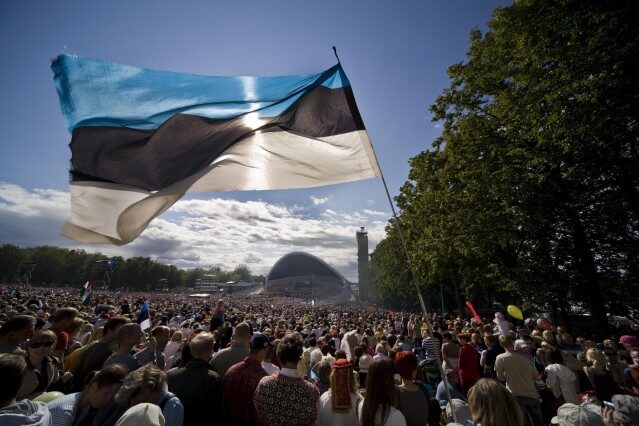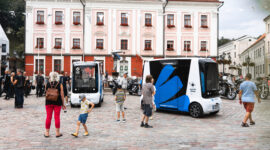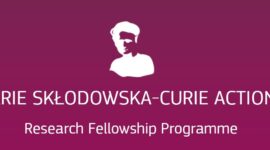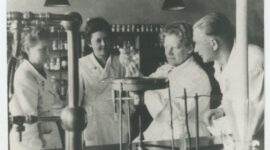When Ülo Niinemets began his PhD in plant science at the University of Tartu in Estonia, he had access to only the most basic tools. It was 1993, two years after Estonia had won independence from the collapsing Soviet Union. The university had just two computers for around 10,000 students and researchers. “I had a ruler and a lab balance,” Niinemets says. “And that was basically it.”
Once the intellectual heart of Estonia, Tartu had become a deprived and isolated garrison town during almost 50 years of Soviet occupation. Students and scholars at the university had been cut off from international science. English-language literature was mostly unavailable and travel impossible. At one point, two ecologists from Finland did manage to visit Tartu, recalls Martin Zobel, a plant researcher at the university. They were followed everywhere by an attentive taxi driver who did little to conceal his connection with the KGB state security.
On a bright morning in late October, the gloomy days of Soviet rule are a distant memory. As Estonia continues its 100th birthday celebrations, Tartu is once again a lively town, buzzing with student life around the university’s main neoclassical building. On the outskirts of town, Niinemets oversees one of Europe’s best-equipped plant research labs, on a tree-lined campus at the Estonian University of Life Sciences. With substantial international funding, including from the European Research Council and the Human Frontier Science Program, he has assembled a system to measure the volatile compounds that trees and grasses emit under heat and other stresses. One of Estonia’s most-cited researchers, he has published papers with more than 100 co-authors from around 50 countries.
His story reflects the impressive scientific progress of Estonia, a small nation that in the past quarter of a century has revamped its science system and created one of the world’s most advanced digital infrastructures. Since it joined the European Union in 2004 (see ‘EU enlargement’), Estonia has spent more than €1 billion (US$1.1 billion) in EU funds on modernizing its research base. It now boasts strengths in numerous fields, including ecology, molecular biology and genetics, and has built up extensive international research networks.
Not all is rosy: Estonia still spends relatively little of its own money on industrial research and development (R&D). And its research prospects are tied heavily to those of the EU. That dependence has led to a concerning drop in R&D spending in the past few years, partly because EU funds aren’t spent evenly across the bloc’s budget cycles. With parliamentary elections coming up in March, political parties promised last December that they would try to boost the falling science spend — a pledge that hasn’t entirely convinced the nation’s scientists.
Still, Estonia’s research prowess is an example of how quickly a small country can turn its scientific fortunes around with international support and well-designed domestic policies — and its success has drawn attention from other nations looking to build their scientific capacity. Latvia, for instance, borders Estonia and joined the EU at the same time. “We started from a very similar position,” says Dmitrijs Stepanovs, Latvia’s deputy state secretary and director of the higher-education and science ministry, but “now we are far behind and must try to catch up.”

How to build a research community
Estonia is one of the world’s tiniest developed nations. With just 1.3 million citizens, it has a smaller population than cities such as Warsaw and Vienna. Its research community comprises just over 3,000 full-time researchers in academia, and a modest number of small and medium-sized tech companies. “Almost everyone knows each other here,” says Karin Jaanson, executive director of the Estonian Research Council, the country’s government-financed grant-giving agency.
But its research base was even smaller when independence arrived. At that time, government spending on science had dropped to almost nothing — as it had in Russia and other former Eastern-bloc countries in the region. Five years after independence, Estonia-based authors were publishing just 500 or so scientific papers per year in English-language journals covered by the citation database Scopus. Since then, the nation’s scholarly output has increased more than fourfold (see ‘Citations boom’). Economic growth picked up rapidly in the 2000s, and public spending on science — aided by EU funds — increased steadily, from €80 million in 2007 to more than €150 million in 2013.
From the grants agency and the adjacent science and education ministry, it is a short walk to a salmon-pink neoclassical building on Tartu’s quiet Toome Hill (Toomemägi), where Emil Kraepelin, the German founding father of modern scientific psychiatry, had his first experimental laboratory in 1886. There, Jüri Allik, a psychologist who also does citation analysis, lays out his views on Estonia’s progress. “Science has recovered faster here than in Latvia and Lithuania, let alone in Russia,” he says.
One major reason, he says, was a set of changes launched shortly after independence by a forward-looking government. After the Soviet Union collapsed, a young, technophile and Western-oriented reform government dismantled defence-related research capacities and handed control of institutes run by the Estonian Academy of Sciences to universities. To prevent the persistence of ‘old boys networks’, which still haunt academia in post-Soviet Russia, Belarus and Ukraine, the government made it compulsory for researchers to retire at 65. It also moved to a system in which science was funded by competitive grants, so that hundreds of uncompetitive researchers had to look for new jobs outside science. A measured, stepwise transition was crucial, says Allik; in Latvia, he says, funding policies were radically upended and it scattered the unprepared research community. In Estonia, by contrast, changes came more gradually, so people had time to adapt.
“We all had to cope with the changes, and live within our means,” says Zobel. “But while new things emerged, the old wasn’t destroyed completely. Scientists enthusiastic about their work did have a chance to stay.”
A dramatic but necessary break was to transform the underperforming Soviet-style Estonian Academy of Sciences from a research organization into a solely advisory body, says coastal engineer Tarmo Soomere who heads the modern academy. “There was way too much low-level science in Estonia,” he says.
Developing international networks — which expose Estonian research to international peer-review standards — has also been crucial, says Conor O’Carroll, an independent research-policy and funding consultant based in Ireland. In 2017, nearly 60% of Estonia’s research articles involved international collaborations, roughly on a par with the Netherlands and Ireland.
Tiger leap
The Internet was still young when Estonia’s new elites embraced the emerging digital age. Drawing on long-standing relations with Finland, a forerunner in information technology (IT), Estonia used its Nordic neighbour as a model for setting up its own digital infrastructure. The Tiger Leap Program, launched in 1996, made sure that all Estonian schools and universities were equipped with modern computers before the turn of the millennium and connected to the Internet by 2001.
Estonia is now one of the world’s most advanced digital ecosystems. A state-issued digital identity allows residents in Estonia to safely handle online transactions with government authorities, tax and registration offices and many other public and private services. Citizens have voted electronically since 2005, using their digital ID for authentication.
“Estonia is far ahead of most other countries in terms of digitized services,” says Kenneth Geers, a cyber-policy research fellow at the Atlantic Council, a Washington DC-based think tank in the field of international affairs. “Digital transactions common in Estonia, like e-voting, might seem shockingly hazardous to the average American. I always advise sceptics to go to Estonia to see just how safely e-governance can work.” Several countries, including Finland, Ukraine and Namibia, are in the process of copying elements of Estonia’s e-governance system, says Siret Schutting, spokesperson for the cyber technology firm Cybernetica in Tallinn.
Estonia started acquiring its IT competence during Soviet times, and has made clever use of that heritage, says Helga Nowotny, an EU science-policy expert in Vienna and former president of the European Research Council. A cybernetics institute run by Estonia’s Academy of Sciences had led Soviet efforts in artificial intelligence and algebra-based computer science. After independence, the institute was transferred to Cybernetica, which was owned by the state at the time and was fully privatized in 2005. The firm developed the X-Road architecture that Estonia uses for encrypted online government services. That platform is the backbone of the nation’s health-information system, which connects doctors and health-care providers to centrally stored personal health data and medical records.
Estonia’s digital ecosystem also makes it easier to do data-intensive research. One of the most high-profile results: the country’s ambitious biobank, situated in an inconspicuous office building on one of Tartu’s main traffic arteries, now includes genetic and health information for about 150,000 individuals. Although the database is not the world’s largest, it is unique in that it covers more than 20% of the country’s adult population. Hosted by the Estonian Genome Centre, it is the cornerstone of the nation’s ambitious personalized medicine programme, which offers citizens free genotyping, as well as feedback on their risks of particular diseases, and how lifestyle changes could affect those. Pilot research projects are examining how variance in genomes might explain differences in susceptibility to common illnesses such as breast cancer and heart disease.
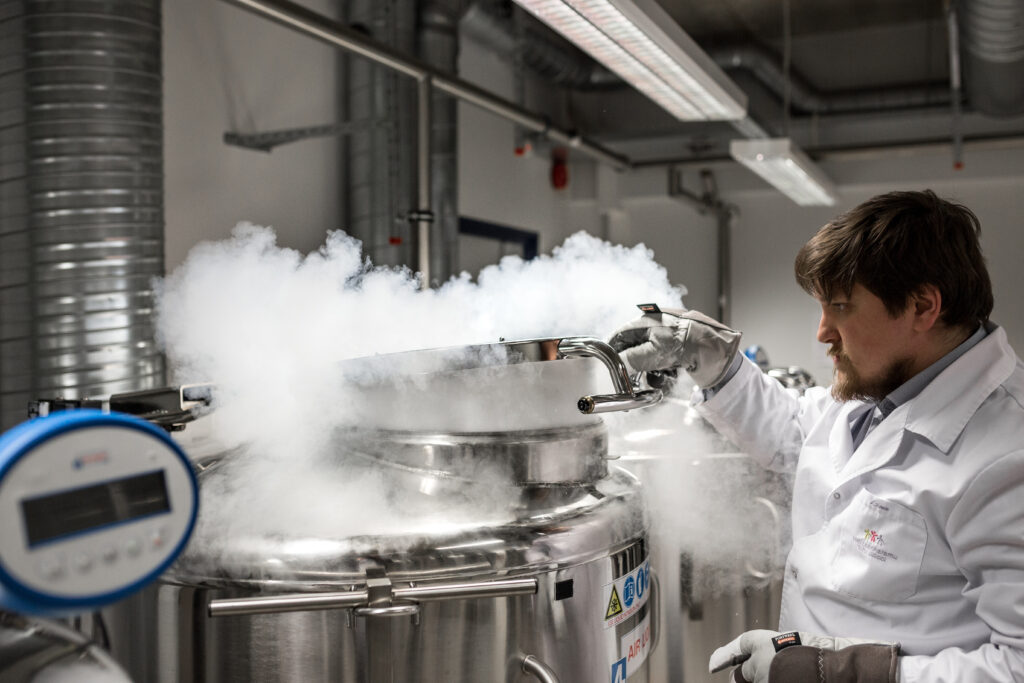
“It will take some time until we see the public-health benefits — but I’m very sure we will see them eventually,” says molecular biologist Andres Metspalu, who first suggested creating the biobank twenty years ago.
EU dependence
Estonia’s modern research infrastructure, including the biobank, relies to a large extent on support from Brussels. Estonia has been more determined than any other country in central and eastern Europe to take advantage of the financial opportunities for science that come with EU membership, says O’Carroll.
Almost half of the Estonian research ministry’s budget now comes from EU structural funds (see ‘EU reliance’) — money allotted to the EU’s poorer regions for economic development. The country allotted to science almost 15% of the nearly €4.4 billion in these funds that it will receive from the EU during 2014–20. (Estonia beats all other EU countries on this measure: Slovakia, which is second, devoted 12% of its structural funds to research.)
Estonia’s scientists are also good at competing for grants from the EU’s multi-year research programmes. In relation to the size of its research workforce, Estonia gets about 40% above the EU average from the European Commission’s €80-billion Horizon 2020 programme, says Indrek Reimand, deputy secretary-general for higher education and science. And, Reimand says, it receives more than three times the average of the 13 member states that have joined since 2004 (see ‘EU enlargement’). One reason is that Estonian applicants and grant recipients have always been well supported by their institutions in writing grant proposals and networking with potential collaborators, says Stepanovs; Latvia has been much less proactive in that respect, he says.
The government has been able to rein in its own spending as reliance on the EU has increased. Its research-grant allocations, for instance, have increased only a little over the past decade. Grant money from the EU accounted for around 20% of Estonia’s grant funding in 2008, and more than 30% in 2017.
In total, spending on all kinds of public and private R&D soared to a high of 2.3% of Estonia’s gross domestic product (GDP) in 2011, and then dropped to 1.3% in 2017 (see ‘EU reliance’). There are extenuating circumstances: a sudden boom of factory-building in the oil-shale sector propelled Estonia’s R&D spending above 2% and then quickly faded away. Investments since then have been low in part because structural funds from the latest budget period haven’t yet been spent, says Rein Kaarli, an official in the research ministry. But the ups and downs highlight Estonia’s dependence on the EU for its research wealth.
Domestic science spending hasn’t kept pace with the rate of economic growth in our country,” says Jaak Aaviksoo, rector of the Tallinn University of Technology who previously served as Estonian minister for science and, later, defence. “That’s a challenge the next government must address.” “Compared to where we started we’re doing very well,” says Reimand. “But it’s true, we cannot be totally happy.”
Uncertain future
It’s doubtful that things will improve dramatically after the next round of national elections. Political parties campaigning for seats in parliament, including the current liberal-central-right coalition government, reiterate the importance of strengthening public investment in science. In December, Estonia’s main political parties, including opposition parties in the current parliament, agreed to boost government R&D spending to 1% of GDP by 2020 — it currently stands at 0.5%. But Reimand says that any incoming government will face the usual demands on public money from all sides that might make it hard to meet pre-election promises.
All that makes the future of Estonian science uncertain. “Relying too heavily on EU money for science is potentially dangerous,” says O’Connor. “But given its past performance, Estonia should be able to deal with that risk.” To maintain its science capacity in the long run, he says, Estonia must seek to substitute structural funds with core funding from domestic sources.
Other countries that used generous EU funds to modernize their science infrastructures are facing the same challenge. “We cannot use structural funds to prop up our budgets for excellence-driven research,” says Maciej Żylicz, president of the Foundation for Polish Science in Warsaw. “That’s quite a dilemma.”
A larger concern for nations on the eastern edges of the EU is that the bloc might weaken as a political force. Estonia’s participation in international science is essential in safeguarding its freedom and security, says Aaviksoo. Just a quarter of a century after splitting from Soviet rule, Estonia still pays close attention to the political ambitions of its vast neighbour, Russia. When Estonia joined the EU, it also came under the protective wing of NATO, the North Atlantic military alliance. It therefore has a more-secure position than non-EU former Soviet nations such as Ukraine, which has been in a dispute with Russia over the Crimean peninsula since 2014. Still, in 2007, the removal of a Soviet-era war memorial in Tallinn led to riots among Estonia’s Russian minority. And shortly afterwards, Estonia became the target of a wave of cyber-attacks, widely thought to be from Russia, that briefly paralysed its digital infrastructure. Estonia and NATO, which operates a cyber-security centre in Tallinn, massively increased cyber-defence capacities in response to the attacks.
“Our nation was ruled by Danes, Swedes, Poles, Germans and Russians in various coalitions,” Aaviksoo says. “For the time being, Western integration is sufficient guarantee for our security. But we are aware that if the geopolitical balance might shift we may get into hard times again.”
Niinemets, whose 5-year €2.26-million advanced grant from the European Research Council finished at the end of April, fears that he might need to downsize his team unless he can secure fresh grant money from the EU. His flourishing international lab includes more than a dozen PhD students and postdocs, of seven nationalities. Their skills are needed every day to make proper use of the elaborate equipment, including a 150-metre atmospheric-flux measurement tower close to the Russian border, that he has assembled over the years.
“What began with a ruler and a balance has led us into strong international research networks,” he says. “I hope Estonia keeps pursuing this path, for the sake of our science and our freedom.
This article was written by Quirin Schiermeier (Nature)
Heading photo: Kaarel Mikkin
 Back
Back